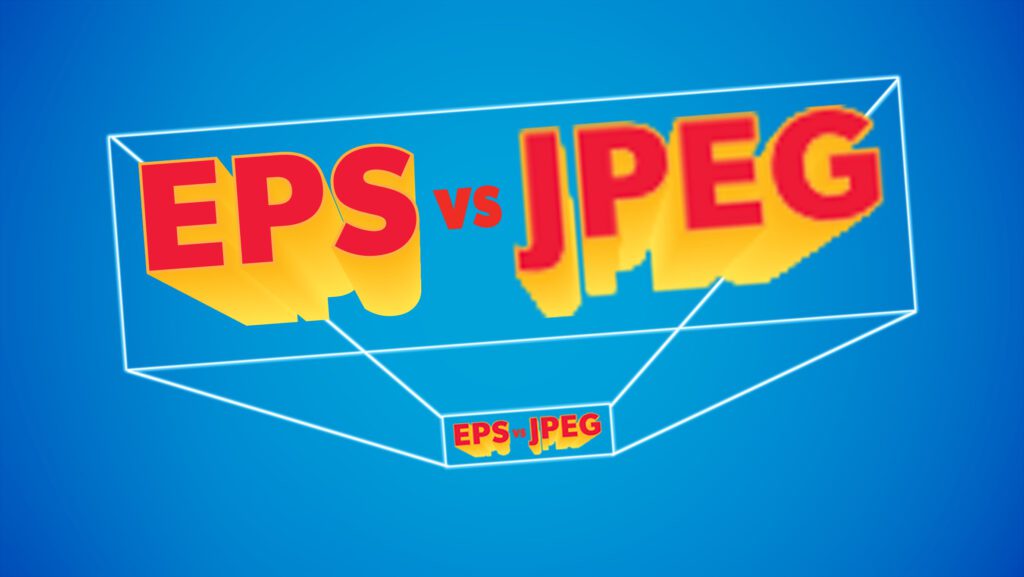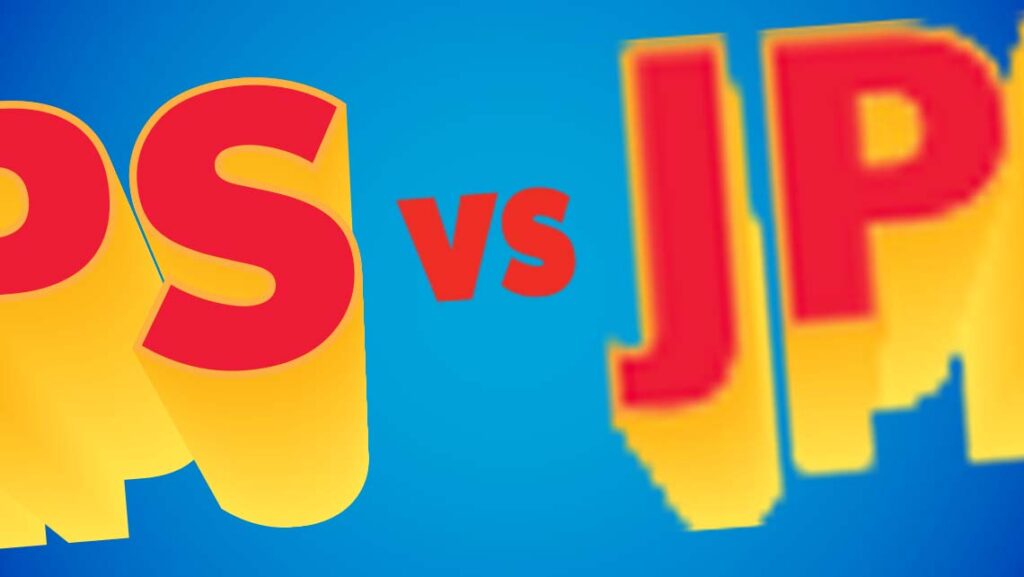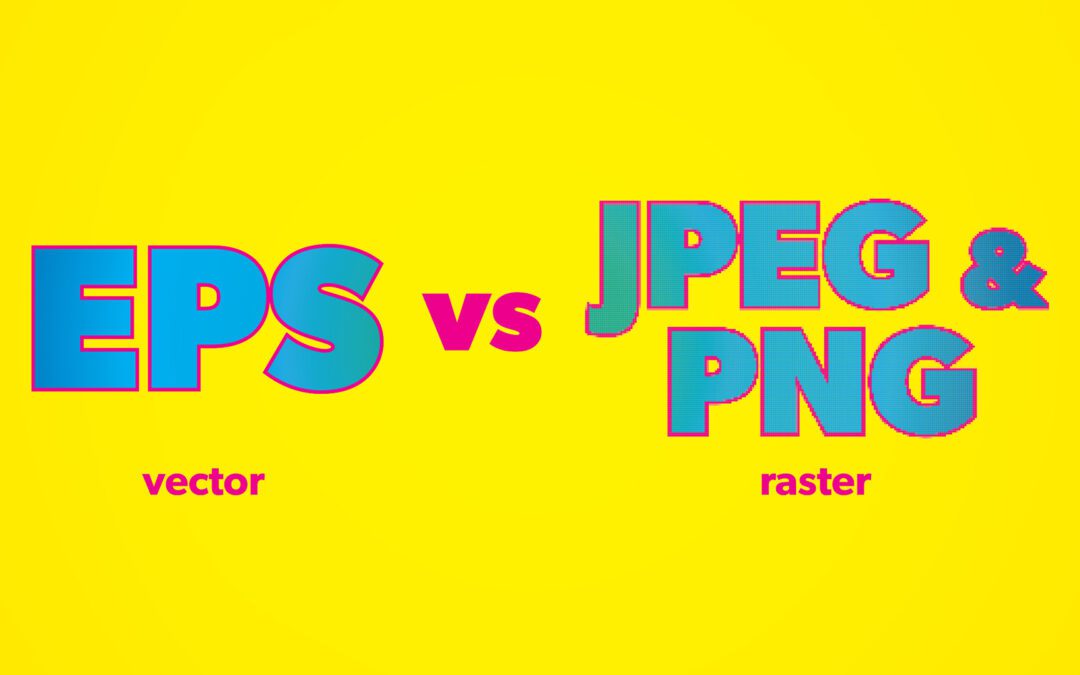As a business owner, you likely aren’t doing your own graphic design work. Instead, you’ve probably hired someone you trust to create the digital assets you require to make your business look good. No doubt you’re considering a logo too. However, there’s more to creating a logo than just designing something that looks good. First, you need to know where and how you intend to apply your logo. Once you determine this, you will know the file types you need. Yet if you don’t know common file types, you won’t know what to ask for from your designer. Whichever file type you decide to get, I can assure you that getting an EPS logo for your business is necessary. To show that EPS files are necessary, I describe common image file types in the following article.

Aren’t JPEGs and PNGs enough?
All digital images are either raster or vector. Two of the most common raster image file formats are JPEGs and PNGs. These raster files are collections of tiny squares (pixels) of varying colours that collectively make an image. JPEGs (Joint Photographic Experts Group) and PNGs (Portable Network Graphics) are okay raster file types for print and web applications when they are the correct size and resolution for a specific situation. However, because they are limited by their size and resolution, they can’t be blown up to larger sizes. You can save many sizes of JPEGs and PNGs for several situations, but this just adds to the number of files taking up space on your hard drive. However, there is a better file type for images that keeps its clarity at larger sizes–a vector file.

There are a few different vector file types–EPS and SVG are the most common. Vector files use mathematical formulas that computers read to produce images. This makes vector files essential because they can be blown up to any size without losing their resolution. JPEGs and PNGs are great when you know the specific logo size required for a project; however, they aren’t enough when considering all logo applications.
What about PDFs, are they just as good?
Yes and no. PDFs (Portable Document Format) can be created with editable vector artwork, but not always. For the most part, they are used for creating multi-page small file size documents for sending in emails and saving on portable USB flash drives. Whether or not a PDF is a vector file depends on the program that makes it. Therefore it is best to ask for vector artwork from your designer specifically.
The case for an EPS logo for your business.
EPS stands for Encapsulated PostScript. It is a vector format file that is still one of the best choices for printing graphics and illustrations. Because of its vector attribute, it will print in large sizes at high resolutions. Often you cannot read an EPS file outside of a design program; however, printers and designers can. In addition, they will appreciate their versatility when creating new JPEGs and PNGs for different media. So, despite not always being able to access EPS files in typical programs outside of graphic design applications, EPS files should always be a part of any logo file collection for your business.
Be sure to make a point of asking your graphic designer to create an EPS logo for your business with JPEG and PNG files to create a more helpful logo package for various situations.
Don’t have a designer yet? Check out my blog article “Interviewing Your Graphic Designer” for tips on what to ask your potential designer before you even start the design process.
Curious about branding and logo design? Connect with me for a consultation through my website cyanbolddesign.com.

